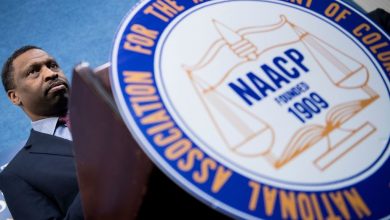How to Address Gaps in Employment in Your Cover Letter

When you’re applying for a new job, your cover letter is one of the most important elements of your application. It gives you an opportunity to highlight your qualifications and explain any aspects of your resume that might raise questions, such as gaps in employment. Gaps in your work history are common, but how you address them can make a significant difference in how potential employers view you. In this article, we’ll explore effective strategies for addressing employment gaps in your cover letter while still presenting yourself as a valuable candidate.
Understanding the Role of a Cover Letter
A cover letter acts as an introduction to your resume and provides a personalized context for your job application. It serves as an opportunity to demonstrate your enthusiasm for the position and showcase why you’re the right fit for the role. While a resume focuses primarily on your skills and experience, a cover letter allows you to explain your background in more depth, which includes providing clarification on any gaps in your employment history.
The importance of a well-crafted cover letter cannot be overstated. It’s your chance to make a first impression and explain any potential red flags that a hiring manager may have when reviewing your resume. Even if your resume shows gaps, a carefully written cover letter can help shift the focus toward your skills, experience, and determination.
For those looking to craft a polished, professional cover letter, you might want to consider tools that can help guide you through the process. For example, you can build a new professional cover letter with Zety, which offers templates and tips that make writing much easier.
Why Employment Gaps Matter
Before diving into how to address employment gaps, it’s important to understand why they matter in the first place. Employment gaps may raise concerns for employers because they might interpret them as a sign of instability, lack of commitment, or an inability to stay employed. While these assumptions aren’t always true, it’s essential to acknowledge the gaps and provide context for them.
In some cases, you might have taken time off to deal with personal or family matters, go back to school, or recover from illness. These are all valid reasons for taking a break from the workforce, but employers need to understand your situation. Your goal is to reassure them that the gap is not a reflection of your professional abilities and that you’re ready and motivated to contribute to their organization.
Be Honest About the Gap
One of the most important things to remember when addressing an employment gap is to be honest. Don’t try to hide the gap or make up a story to cover it up. Employers value honesty and transparency. Instead of trying to cover up the time away from work, address it directly in your cover letter.
You can briefly explain why there was a gap in your employment, whether it was due to personal reasons, family responsibilities, education, or a health issue. If possible, provide details that show how you stayed productive during this time. For example, you might have freelanced, volunteered, taken courses, or developed new skills. This demonstrates that you were proactive during the gap rather than simply waiting for the opportunity to return to work.
Focus on What You Learned During the Gap
Rather than seeing a gap as a setback, frame it as an opportunity for growth. During your time away from work, you may have learned valuable skills or gained new perspectives. For example, if you took a break to raise children, you likely developed exceptional time management, communication, and problem-solving abilities—skills that are highly transferable to the workplace.
If you went back to school, mention the certifications or degrees you earned. If you volunteered or worked part-time, talk about the experience and how it helped you stay engaged in your field. Employers want to know how your time away from the workforce has made you a stronger, more capable candidate.
Keep the Tone Positive
When writing about an employment gap, always maintain a positive and forward-thinking tone. Avoid focusing too much on the reasons for the gap or going into unnecessary details. Instead, highlight how you’re ready to bring your skills and experience to the new role. The goal is to show enthusiasm for the job and demonstrate your commitment to moving forward in your career.
A positive tone conveys that you are confident in your ability to succeed, even after taking time off. This mindset will help reassure employers that you are not only capable of handling the responsibilities of the job but that you’re also eager to get back into the workforce.
Provide Context, Not an Excuse
It’s important to provide context for the employment gap, but don’t dwell on making excuses. Hiring managers appreciate concise, straightforward explanations that focus on how the gap has prepared you for this new opportunity.
For example, if you took time off to care for a family member, simply explain that in your cover letter, along with a brief mention of how it helped you develop skills that will benefit you in the job you’re applying for. There’s no need to go into excessive detail or make the situation sound like a hardship. By presenting the gap as something that contributed positively to your personal growth, you demonstrate maturity and professionalism.
Highlight the Experience You Gained
While explaining an employment gap, take the opportunity to emphasize any experience or skills you gained during this time. For example, if you worked as a freelancer or consultant, outline the projects you worked on, the skills you developed, and the successes you achieved. Even if the work wasn’t full-time, it still shows that you remained productive and engaged with the industry.
Similarly, if you took time off to pursue further education or training, emphasize the value this brings to the position you’re applying for. Demonstrating how you’ve kept your skills current or even improved them during the gap is crucial in ensuring that hiring managers view the gap in a positive light.
Address the Gap with Confidence
Your cover letter is an opportunity to take charge of how potential employers view you. While it’s essential to address the gap in your employment, it’s equally important to do so with confidence. Avoid sounding defensive or apologetic. Instead, present the gap as a minor detail in the broader narrative of your career.
By approaching the gap with a confident tone, you help employers focus on your qualifications and what you can bring to the job rather than dwelling on past gaps. Focus on your strengths, skills, and experiences, and make it clear that you are excited about the next step in your career.
Tips for Writing a Cover Letter that Addresses Employment Gaps
- Be Brief but Clear: You don’t need to go into detail about the reasons for the gap. A few sentences should suffice. Keep the focus on how you’ve stayed engaged or developed during that time.
- Focus on Your Skills: Emphasize your qualifications and experience rather than the gap. Show how you can bring value to the role despite the employment break.
- Stay Professional: Even if your gap was due to personal reasons, always keep the tone of your cover letter professional. This shows your maturity and readiness to move forward in your career.
- Stay Positive: Focus on what you learned and how the gap has helped you grow. Stay optimistic and convey a forward-thinking attitude.
Conclusion
Employment gaps are a natural part of many people’s careers, and how you address them in your cover letter can make all the difference. Be honest, provide context, and highlight the skills you gained during the time off. By doing so, you demonstrate resilience and a commitment to personal and professional growth. In your cover letter, frame the gap as a part of your career journey and focus on what you bring to the table now. Ultimately, your ability to confidently address an employment gap will showcase your professionalism and help you stand out as a strong candidate for the job.




